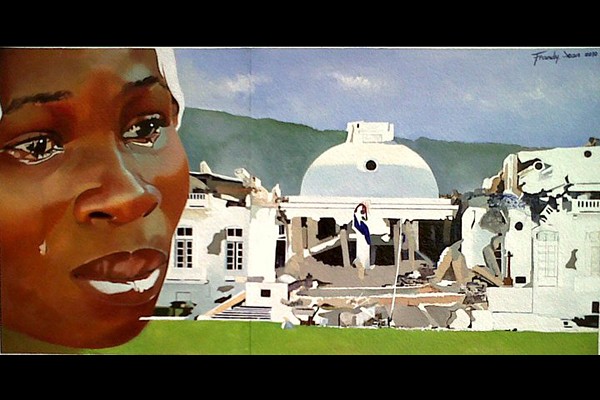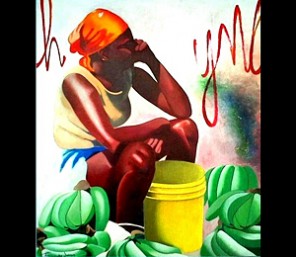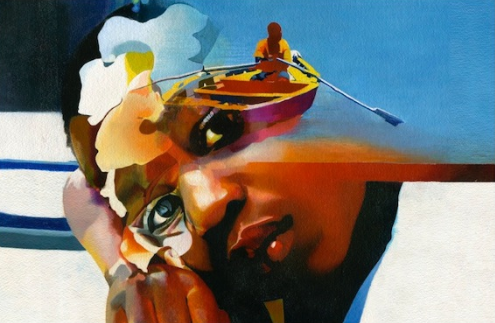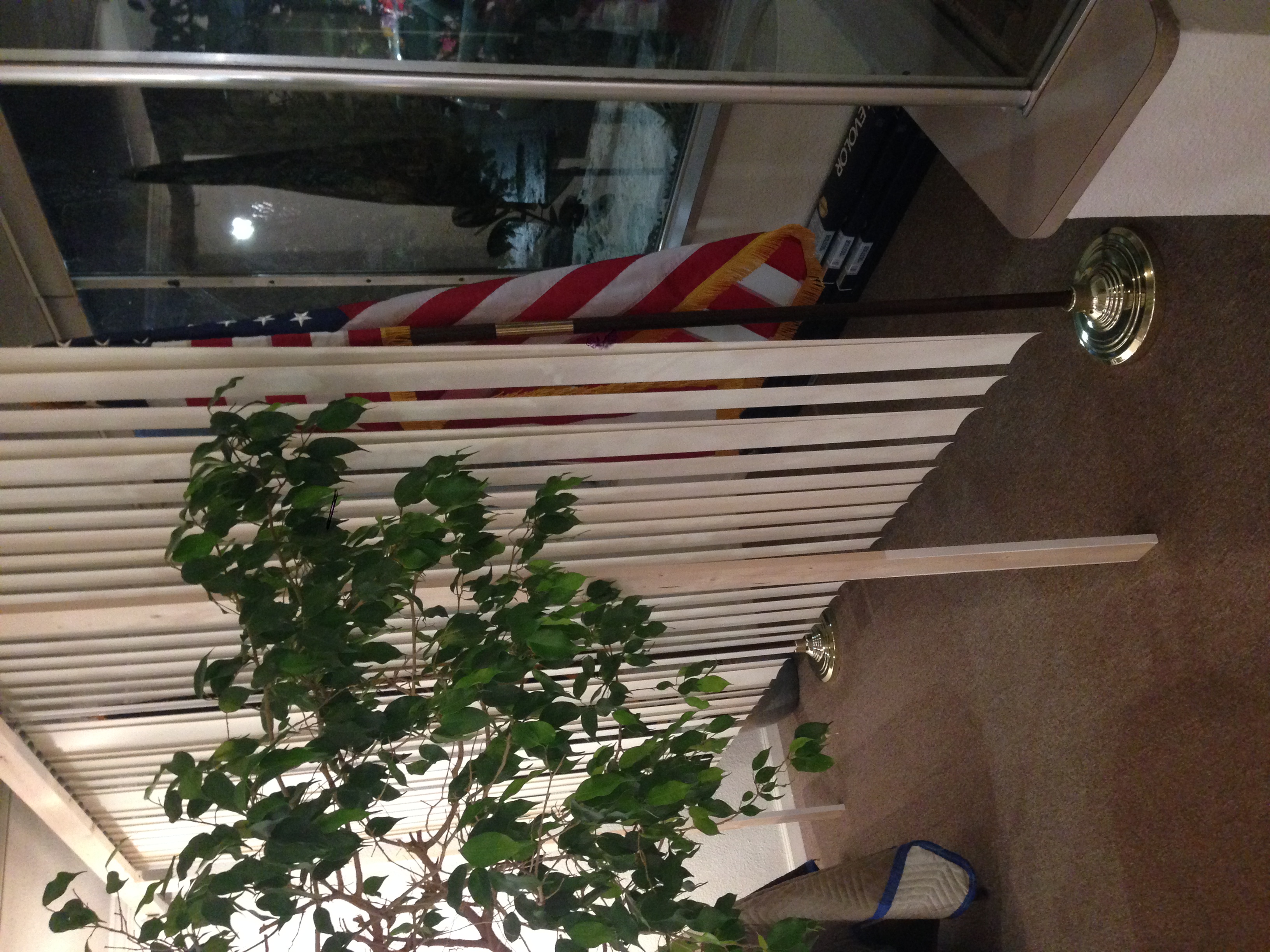Haiti set the stage and paved the way for the abolition of slavery
This is a great graphic to show the timeline of events leading to the abolition of slavery.
ewozyon fen | end erosion
HTRIP - Haiti Timber Re-Introduction Program
January was an exceptionally busy month for many of our mountainous farmers as they concentrated most of their energies on harvesting millet and starting soil conservation work in their fields. In the same way, most of HTRIP’s resources and staff were focused on delivering trainings and technical assistance about soil conservation techniques to more than one thousand farmers in 47 communities in the Artibonite region of Haiti, where subsistence farming is being done on the hillsides. Soil erosion is one of the biggest environmental problems in these communities, and the inhabitants consistently struggle with intense rain events that can wash away valuable layers of the hillsides’ topsoil. HTRIP is dedicated to helping these farmers by teaching them a wide range of soil conservation techniques that can help them reduce soil erosion in the mountains.
Trenches Built to reduce water run off and flooding
For example, last month our training sessions participants learned how to build contour trenches, bench terraces, and contour rock walls to slow the movement of soil and water down the hills. Farmers who attended our trainings are now able to organize long days of hard soil conservation kombits in their fields with HTRIP providing meals to each participant. These kombits will go until the end of April to prepare hundreds of parcels of land that will be covered with different species of trees such as Spanish cedar, mahogany and ash tree. During the upcoming summer, HTRIP plans on planting about 400,000 trees which will make a total of 2 Million trees planted by the program since its creation in 2006.
Preparation of parcels of land for plantin
Furthermore, HTRIP staff also spent time in the field in order to start measuring the survival rate of the trees that were planted in the summer of 2014. Consistent plot control helps us have reliable statistics, so that we can report on the effectiveness of our reforestation model. Part of the HTRIP staff is also jointly working with Starry Sprenkle, HTRIP scientific consultant, and Inter-American Institute for Cooperation on Agriculture (IICA) to publish a scientific paper on the yam and passion fruit that were planted in 30 HTRIP mature plots last year. The publication of the findings of this research will have a significant impact on HTRIP’s Agroforestry model, and will also help farmers in the Artibonite have a better understanding of the growing of yams and passion fruits in agroforestry plots.
Some of the 400,000 to be planted this summer
Thank you from the HTRIP staff, including Starry Sprenkle and Dawn Johnson.
Peace and Trees,
Melissa Sanon
HTRIP program Manager
Thanks to supporters like you, the HTRIP staff and farmers will plant the two millionth tree in Haiti this summer. Below is a breakdown of the 400,000 trees lined up for this year's planting season.
Planting trees in Haiti means SURVIVAL and an INCREASED QUALITY OF LIFE.
Each tree has a life-changing economic impact on individuals and families. To continue HTRIP's triumphs, we need your support! Donations are critical to our success of reforesting Haiti.
Don't forget to Like us on Facebook to get the latest information about the Art Culture and Ecology of Haiti!
Haiti Love
Haiti Friends - HTRIP -Haiti Timber Re-Introduction Program - REFOREST HAITI
Miss Body Plastik
This is the worst public service announcement with the best message.
A narrative short film by Ciné Institute student Louis Ebby Angel.
Shady Ave Article- Name Change for Haitian Support Group - Haiti Friends
By Nancy Polinsky Johnson,
Shady Ave Article in Spring 2015 Issue
A Point Breeze-based non-profit and art-gallery dedicated to helping Haiti has a new name and new executive director.
Friends of Hôpital Albert Schweitzer Haiti is now Haiti Friends, and Eddie Rawson, 35, has assumed leadership of the organization from his mother, Lucy Rawson, who founded the local auxiliary in the 1980s to support the work of the hospital in Deschapelles, Haiti.
Mrs. Rawson is now president of the Haiti Friends board of directors and continues to purchase Haitian artwork for the Haiti Friends Gallery at 6739 Reynolds Street, where sales help fund the mission’s work.
“Our former name was such a mouthful and everyone called us ‘Friends’ anyway, so we decided to streamline,” says Director Rawson, who previously served as chief of operations for Moving the Lives of Kids, an organization that employs youths to combine art and community service by creating public murals.
Rawson’s interest in art was inspired by his many trips to Haiti as a youngster. His grandparents founded Hôpital Albert Schweitzer Haiti in 1956, and his father, Ian Rawson (now retired), served as managing director of the hospital.
In addition to raising awareness of Haiti’s vibrant culture, Haiti Friends manages the Haiti Timber Re-introduction Program (HTRIP) to remedy some of the impoverished nation’s chronic problems. “We’re working to reforest the Artibonite Valley around the hospital, which has been deforested over the years,” Rawson explains.
Trees provide soil retention for steeper hillside crops, reducing flood damage and decreasing erosion. The shade provided by growing trees helps stimulate the growth of many different crops, and trees provide lumber and charcoal, making them a valuable source of revenue. “We plant 400,000 trees a year,” Rawson notes. “By this June, we will have planted two million.”
For more information, visit haitifriends.org. Haiti Friends Gallery hours are Monday through Friday, 9 to 5, and Saturdays by appointment.
Art As Narrative: Highlighting Machanns In Haitian Culture
By Tadia Toussaint
As a child Frandy Jean drew his designs behind closed doors because his father wanted him to focus solely on his studies. The now 26 year old just debuted his latest collection of paintings at the art gallery in the Theatre for New City, in time for the 5th anniversary of Haiti’s earthquake.
“I wasn’t really into school,” Jean said. “I’m a self-taught artist. I used to draw my teachers and classmates while class was in session.”
The earthquake survivor moved from Delmas, Haiti just two and a half years ago, and has since been inspired by the resilience of the Haitian people.
“The only thing I always knew I was good at was art,” he said.
In his latest collection titled Art as Narrative, Jean shares the stories of women, specifically machann (market ladies) and children. Encouraged to show a better Haiti to the public, Jean said his mission is to get others to be open minded about Haitian culture. He believes the significance of the market ladies goes unnoticed.
Hours sitting under the sun, or walking miles trying to make a living, these are the kind of people that Jean thinks deserve exposure.
“They are an essential part of Haiti’s economy and too many times they are neglected.”
In 2006, Jean started to experiment painting with watercolors. He seized an opportunity to work at an art center in his neighborhood’s orphanage.
“I considered that place my second home because they gave me a space to work on my personal projects and I also helped and taught the kids who showed interest in art,” he said.
Jean explained that in some of the artwork showcased, pencil marks are visible to elaborate his unfinished works.
“It’s to show people, that Haiti is still trying to recover from the earthquake,” he said. “I paint to educate people.”
Jean’s art is his main source of income. Since he moved to the states, he opened his very own art gallery in New Jersey in April 2013. Art as Narrative is comprised of 32 paintings, which took Jean only a year to complete.
“I don’t think my art is for people that like beauty. I don’t paint just for beauty. I paint to get people to have a better understanding about other cultures.”
Remnants of life in Haiti, both before and after the earthquake is evident in his paintings. The combination of colors and aesthetic helps define the stories he chooses to tell in each work.
Frandy will have his work on exhibit at the Theater for the New City at 155 1st Avenue in New York City. The opening reception is scheduled for Feb. 21 from 2 pm to 5 pm. The exhibit will stay up through April 10, 2015.
(source) http://haitiantimes.com/art-as-narrative-highlighting-machanns-in-haitian-culture-9847/



5 Haitians That Contributed To American History
By Farah Louis
Black History Month celebrates the contributions blacks made to American development. Take a look below at these five Haitian Americans who made an impact on America’s history.
Jean Baptiste Point du Sable was one of the first permanent residents of Chicago, Illinois and is hailed as the founder of Chicago. Point du Sable was a successful fur and grain trader who established a base in the Great Lakes region of Chicago in the late 1770s. The son of a Haitian father and an African-born slave mother, du Sable was summoned by the British to represent their trading interests with the Indians in Detroit. In 1784, Du Sable returned to Chicago, creating several buildings and infrastructure that steadily flourished into a major trading center.
Henri Christophe was an influential Haitian leader who played a significant role in the American Revolution, serving in the French unit in Savannah, Georgia in 1780. A former slave and key leader in the Haitian Revolution, Christophe was among the five hundred forty-five Haitian free slaves known as the Fontages Legion, fighting for the freedom of men and women in America who desired to be freed from the shackles of oppression.
Pierre Toussaint was a former slave from Haiti who was transported to New York City by his owners in 1787. He later gained his freedom in 1807. Toussaint is acknowledged and respected as one of the leading black New Yorkers of his time. Toussaint later went on to become a philanthropist, delivering charitable services by establishing an orphanage for refugees and offering them employment opportunities. Toussaint also contributed to institution and construction of the St. Patrick’s Old Cathedral, in New York City. Pierre Toussaint was acknowledged as venerable by Pope John Paul II and is highly regarded by the Roman Catholic Archdiocese of New York.
Elizabeth Clarisse Lange, also known as Mother Mary, was a Haitian refugee who fled to Cuba because of the escalating slave rebellion in Haiti. Lange later migrated to Baltimore, Maryland where an influx of French-speaking refugees settled. Although Lange was a refugee, she was educated and recognized there were children of refugees who significantly lacked education. Elizabeth and her friend, Marie Balas had a mission to provide housing to orphans seeking a home and education for children of fugitive and freed slaves.
Rodolphe Lucien Desdunes was a prominent Haitian editor, author, and civil rights activist from New Orleans, Louisiana. Desdunes is best known for his work in the Plessy v. Ferguson trial, one of the most critical civil rights cases in American history. Desdunes helped form a committee called, Comité des Citoyens (“Citizens Committee”), to combat laws segregating blacks and whites in public spaces. In 1889, Desdunes became the editor of the Crusader, a weekly newspaper created to inform black and Creole leaders of segregation laws and efforts to advocate for equal rights.
(source) http://haitiantimes.com/5-haitians-that-contributed-to-american-history-10256/
Actor JOHN GOODMAN Visits HAITI FRIENDS!
The production crew of Let it Snow, a movie currently being filmed in Pittsburgh, scouted our Reynolds Street Gallery as being the perfect spot to both film in front of and use as production office and warming station for the cast and crew. The movie is starring Diane Keaton, John Goodman and June Squibb with Olivia Wilde, Ed Helms and Marisa Tomei.
The production started early Friday - transforming the windows of our space into a Salvation Army where a scene with Diane Keaton and John Goodman would be filmed outside. Our office and gallery were suddenly lined with directors chairs - production equipment - and an exciting food spread. The temperature outside dipped well into the negatives as cast and crew piled into our storefront to grab a coffee or a snack to warm-up before going back out in the cold to complete the day of filming.
Haiti Friends executive director, Edward Rawson, chatted with actor, John Goodman, who remarked that the kindness of Pittsburgh people is what he was enjoying most about the city. He then checked out the Erzulie art exhibition we currently have on display and was enthusiastic about learning of our organization and the work we are doing in Haiti. Haiti Friends felt honored to have our gallery transformed to a Hollywood set in one day - and to have the opportunity to connect and engage with some of the cast members and the crew. It was an exciting day!
Miss Earth Haiti 2014 - Fabiaula Dumas
ex voodoo (vodou)
Haiti, Port-au-Prince 2013
Inanity of the Haitian Vodou show today
Used: Canon 5DMark3, Magic Lantern RAW, 1920x818, carl zeiss 50mm 1.4
Edited: Adobe Premiere CC, Adobe After Effects CC, Camera Raw, vision color
Barikad Crew " TOUTOUNI " [ Video kanaval 2015 ]
Haiti Friends - HTRIP -Haiti Timber Re-Introduction Program - REFOREST HAITI
Rockfam - Filalang [kanaval 2015] (Official Video)
Chalè - 2 Chay [kanaval 2015] (Official Video)
Vodou Brooklyn
Stephanie Keith met a Vodou priest at a Buddhist interfaith event in New York. He invited her to photograph and experience the religious world of his Haitian culture. Ten ceremonies later, she offers her images and reflections on these late-night rituals.
Produced by Trent Gilliss and Mitch Hanley






































